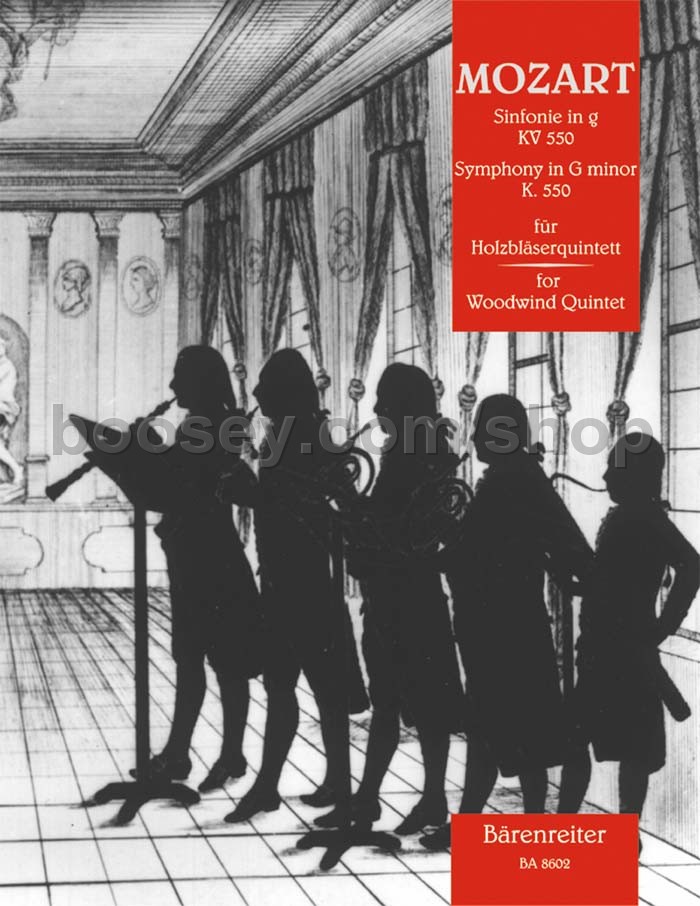

#Mozart symphony in g minor youtube series#
These highly trained operatives are hellbent on creating a new world order through an escalating series of terrorist attacks. With the IMF disbanded, and Ethan (Tom Cruise) out in the cold, the team now faces off against a network of highly skilled special agents, the Syndicate. It’s a fantastic conclusion to Mozart’s symphonies perhaps he knew it would be his last.Written By:ĝrew Pearce, Christopher McQuarrie, Laeta Kalogridis, Will Staples, Bruce Geller As if to show the world how far he’s come, the beautifully simple French horn tune from the first symphony is back – and this time, it’s the focus of the entire finale. Initially Mozart was criticised for his hotch-potch approach to composition, but every movement showcases another great Mozart moment. Luckily, it was still popular in Prague – perhaps the symphony was a token of gratitude to his loyal fans in the city?ĭownload: English Chamber Orchestra/Daniel BarenboimĪ pinch of playful naivety, a dash of European grandeur, and a hint of operatic humour thrown in for good measure: the majestic C major blaze of the ‘Jupiter’ symphony takes the best features of Mozart’s style and fits them all together in a fantastic five-movement musical jigsaw. It might sound relaxing now, but the Viennese audience of 1786 found it just that little bit too stressful, and sometimes scorned his music.

Tense and mournful in places, wistful and beautiful in others, Mozart shows us once and for all that his music is capable of a wide range of emotions. It’s still a piece designed to entertain, but from its slow introduction the ‘Prague’ symphony is set apart as something slightly more brooding. Rushing scales and lively dynamic changes give this symphony a playful character.ĭownload: Berlin Philharmonic Orchestra/Claudio Abbado The string players are pushed to the fore and the wind section is larger than usual – he even uses clarinets. Mozart adopts a French style of orchestral music in this symphony, written in 1778. It’s passionate and violent, and tragically beautiful.ĭownload: English Chamber Orchestra/Benjamin Britten 40, Mozart breaks boundaries once more – a symphony would normally end on a more positive note, in a major key, but No. With wide leaps in the tunes, and brisk rhythms in the strings, both symphonies are part of Mozart’s Sturm und Drang (storm and stress) music. 40 in G minorĬomposing music in G minor might not sound like a controversial musical decision, but it was unusual at the time. It’s not quite side-splitting, but it certainly would have raised a smile in Salzburg in 1772.ĭownload: I Solisti Veneti/Claudio Scimone

The piece just doesn’t end! There are a fair few chords which imply it might be time to clap, but Mozart extends the final bars to trick us. The final ‘Presto’ movement is wonderfully jolly, but the joke's on us in the last few bars. Mozart certainly had a cheeky sense of humour, and he’s managed to translate it into his fifteenth symphony. He uses his trademark features, learnt from studying Haydn and listening to opera in Vienna, but adds new and exciting music never featured in symphonies before – think uneven musical phrases, prominent tunes from the oboes and flutes, cheery violin lines, and brilliant fanfares.ĭownload: Grand Chamber Orchestra Moscow/Ilmar Lapinsch & Sinfonia Slovakia Chamber Orchestra/Josef Vodnansky Perhaps it’s cheating to group these two together, but they’re both examples of Mozart’s growing musical confidence. You might be forgiven for thinking the symphony sounds a bit like an opera overture with Mozart’s fast shimmering strings and trademark fluttering flutes - it shares some of its lively characteristics with The Marriage of Figaro, composed 19 years later.ĭownload: The English Consort/Trevor Pinnock Mozart even rips off one of his themes from an opera he wrote that year, Apollo et Hyacinthus, in the second movement. Symphonies and operas were a lot more interchangeable in Vienna in 1767 than they are now.


 0 kommentar(er)
0 kommentar(er)
